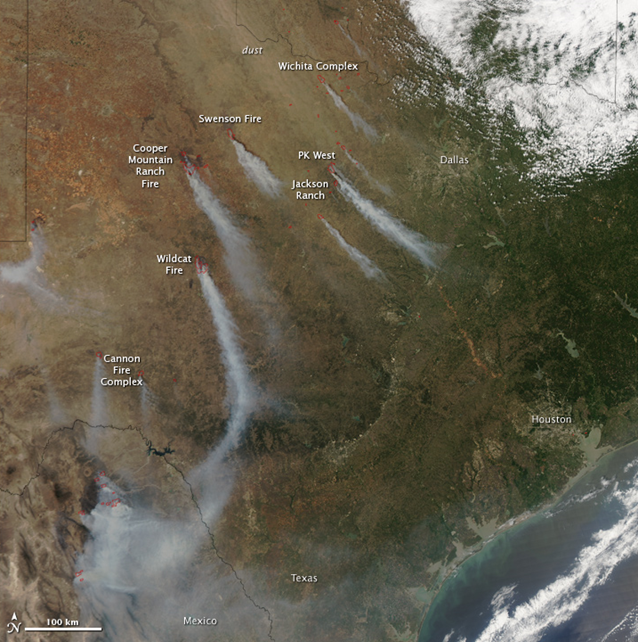In Texas, questions of drought and climate change
By KATE GALBRAITH
22 April 2011 The severe drought across Texas has hit the oil and gas city of Midland especially hard, as I reported in Friday’s New York Times and Texas Tribune. Since Oct. 1, Midland has received only 0.13 inches of rainfall — making it “most likely the driest six-and-a-half-month period in recorded history,” said David Hennig, a Midland-based meteorologist with the National Weather Service. With three major regional reservoirs ranging 2 percent to 30 percent full, the city has put in place outdoor watering restrictions — albeit not backed up by penalties — for the first time. Texas weather experts attribute this drought to the Niña effect. Some observers are wondering whether it is also related to global warming, though that’s a delicate question in Texas, the only state refusing to carry out greenhouse gas regulations recently introduced by the Environmental Protection Agency. Gov. Rick Perry, who just issued a proclamation urging prayers for rain this weekend, has said that the climate is always changing but that it is not clear that humans are affecting it. John Nielsen-Gammon, the Texas State climatologist, says that about 80 percent of the models laid out by the Intergovernmental Panel on Climate Change in a 2007 report predicted declining precipitation for Texas, but on the other hand Texas has gotten increasing rainfall from 1895 to the present. The reason for this difference is unclear, he said, but it could be attributable to factors like variations of sea-surface temperature patterns, modeling flaws or changes in aerosols or land use. “Certainly global warming has contributed to the rate at which the ground has dried out because of the warm temperatures,” Dr. Nielsen-Gammon said. But, he added, “the magnitude of the dryness is well beyond what global warming would be able to do so far.” …
In Texas, Questions of Drought and Climate Change via The Oil Drum
